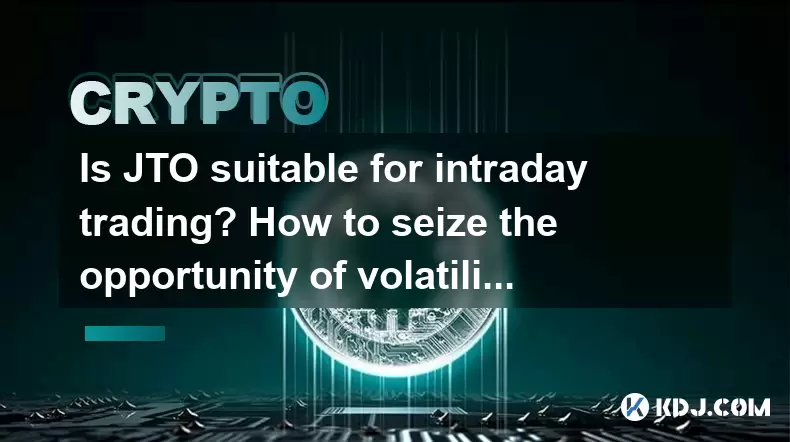-
 Bitcoin
Bitcoin $118700
1.60% -
 Ethereum
Ethereum $4230
-1.16% -
 XRP
XRP $3.197
-2.08% -
 Tether USDt
Tether USDt $1.000
-0.01% -
 BNB
BNB $803.3
-0.46% -
 Solana
Solana $183.2
0.06% -
 USDC
USDC $0.9999
0.00% -
 Dogecoin
Dogecoin $0.2343
-3.95% -
 TRON
TRON $0.3390
1.00% -
 Cardano
Cardano $0.8020
-1.93% -
 Hyperliquid
Hyperliquid $45.18
2.39% -
 Chainlink
Chainlink $22.04
3.02% -
 Stellar
Stellar $0.4449
-1.66% -
 Sui
Sui $3.872
-2.14% -
 Bitcoin Cash
Bitcoin Cash $570.6
-0.37% -
 Hedera
Hedera $0.2593
-2.92% -
 Ethena USDe
Ethena USDe $1.001
-0.01% -
 Avalanche
Avalanche $23.83
-3.79% -
 Litecoin
Litecoin $124.5
1.83% -
 Toncoin
Toncoin $3.335
-2.74% -
 UNUS SED LEO
UNUS SED LEO $9.029
0.26% -
 Shiba Inu
Shiba Inu $0.00001363
-2.31% -
 Uniswap
Uniswap $10.93
-1.42% -
 Polkadot
Polkadot $4.060
-2.29% -
 Dai
Dai $1.000
-0.01% -
 Cronos
Cronos $0.1631
2.71% -
 Ethena
Ethena $0.7746
3.06% -
 Pepe
Pepe $0.00001208
-3.73% -
 Bitget Token
Bitget Token $4.445
-1.47% -
 Monero
Monero $268.7
-2.30%
Is JTO suitable for intraday trading? How to seize the opportunity of volatility?
JTO's high volatility makes it suitable for intraday trading; use scalping, momentum, breakout, and reversal strategies to seize opportunities while managing risks effectively.
May 07, 2025 at 05:35 pm

Is JTO suitable for intraday trading? How to seize the opportunity of volatility?
Intraday trading, also known as day trading, involves buying and selling financial instruments within the same trading day. JTO (Jito), a cryptocurrency token, has garnered attention among traders due to its volatility and potential for quick gains. This article will explore whether JTO is suitable for intraday trading and provide detailed guidance on how to seize the opportunities presented by its volatility.
Understanding JTO and Its Market Behavior
JTO is a token that operates on the Solana blockchain, designed to enhance the staking and governance processes within the Jito ecosystem. The token's market behavior is characterized by significant volatility, which is a double-edged sword for traders. On one hand, volatility can lead to substantial profits if timed correctly. On the other hand, it can result in significant losses if the market moves against the trader's position.
Assessing JTO's Suitability for Intraday Trading
To determine whether JTO is suitable for intraday trading, several factors need to be considered:
- Liquidity: JTO must have sufficient trading volume to allow for quick entry and exit from positions. High liquidity reduces the risk of slippage, which is crucial for intraday traders who need to execute trades rapidly.
- Volatility: As mentioned, JTO exhibits high volatility, which is attractive for intraday traders looking to capitalize on price movements within a single trading day.
- Market Sentiment: Understanding the general sentiment around JTO can help traders anticipate potential price movements. This includes staying updated on news, developments, and social media trends related to Jito and the broader Solana ecosystem.
- Technical Analysis: Intraday traders often rely on technical analysis to make trading decisions. JTO's price charts should exhibit clear patterns and trends that can be analyzed using various technical indicators.
Strategies for Seizing Volatility Opportunities with JTO
To effectively seize the opportunities presented by JTO's volatility, traders can employ several strategies:
- Scalping: This involves making numerous small trades throughout the day to profit from minor price changes. Scalpers typically use high leverage and focus on short-term price movements.
- Momentum Trading: Traders using this strategy aim to capitalize on the continuation of existing market trends. They enter positions when JTO's price shows strong momentum and exit when the momentum begins to fade.
- Breakout Trading: This strategy involves identifying key levels of support and resistance on JTO's price chart. Traders enter positions when the price breaks out of these levels, anticipating further movement in the direction of the breakout.
- Reversal Trading: Contrarian traders look for signs that JTO's price is about to reverse. They enter positions when they believe the current trend is weakening, aiming to profit from the subsequent price movement in the opposite direction.
Practical Steps for Intraday Trading JTO
Here are detailed steps to help traders engage in intraday trading with JTO:
- Choose a Reliable Exchange: Select a cryptocurrency exchange that supports JTO trading and offers high liquidity. Popular exchanges for JTO include Binance and FTX.
- Set Up Trading Tools: Use trading platforms that provide real-time data, charting tools, and order execution capabilities. Platforms like TradingView can be integrated with exchanges for a seamless trading experience.
- Analyze the Market: Before entering a trade, conduct thorough market analysis. Use technical indicators such as moving averages, RSI, and MACD to identify potential entry and exit points.
- Execute Trades: Once a trading opportunity is identified, place your order. Consider using limit orders to control the price at which you enter and exit positions, reducing the risk of slippage.
- Monitor and Adjust: Continuously monitor JTO's price movements and be prepared to adjust your positions as needed. Use stop-loss orders to manage risk and protect your capital.
- Review and Learn: After each trading day, review your trades to identify what worked well and what could be improved. This ongoing analysis will help refine your trading strategy over time.
Managing Risks in JTO Intraday Trading
Intraday trading JTO comes with inherent risks, and effective risk management is crucial. Here are some key principles to follow:
- Use Stop-Loss Orders: Always set stop-loss orders to limit potential losses. Determine your risk tolerance and set stop-loss levels accordingly.
- Diversify Your Trades: Avoid putting all your capital into a single trade. Diversify across different assets and strategies to spread risk.
- Control Leverage: While leverage can amplify profits, it can also magnify losses. Use leverage cautiously and only with capital you can afford to lose.
- Stay Disciplined: Stick to your trading plan and avoid making impulsive decisions based on emotions. Discipline is key to long-term success in intraday trading.
Enhancing Your Trading Skills with JTO
To improve your intraday trading skills with JTO, consider the following tips:
- Continuous Learning: Stay updated on market trends, new trading strategies, and developments within the Jito ecosystem. Participate in trading communities and forums to learn from other traders.
- Practice with a Demo Account: Many exchanges offer demo accounts where you can practice trading without risking real money. Use these to test and refine your strategies.
- Analyze Past Trades: Keep a trading journal to record your trades, including entry and exit points, reasons for entering the trade, and the outcome. Analyze this data to identify patterns and improve your decision-making process.
- Stay Informed: Keep abreast of news and events that could impact JTO's price. This includes regulatory developments, technological advancements within the Solana ecosystem, and broader market trends.
Frequently Asked Questions
Q: How does the liquidity of JTO affect intraday trading?
A: Liquidity directly impacts the ease with which traders can enter and exit positions. High liquidity in JTO ensures that traders can execute trades quickly and at desired prices, minimizing the risk of slippage. Conversely, low liquidity can lead to larger spreads and increased slippage, making it more challenging to trade effectively.
Q: What are the key technical indicators to use when trading JTO intraday?
A: Some of the key technical indicators for intraday trading JTO include the Relative Strength Index (RSI) to gauge overbought or oversold conditions, Moving Averages to identify trends, and the Moving Average Convergence Divergence (MACD) to spot potential trend reversals. These indicators can help traders make informed decisions based on JTO's price movements.
Q: How can I manage my emotions while trading JTO intraday?
A: Managing emotions is crucial for successful intraday trading. Strategies include setting clear trading rules and sticking to them, taking breaks to avoid burnout, and maintaining a balanced perspective on wins and losses. It's also helpful to practice mindfulness and stress-reduction techniques to keep emotions in check during volatile trading sessions.
Q: Are there specific times of the day that are better for trading JTO?
A: While the cryptocurrency market operates 24/7, certain times may offer more trading opportunities due to increased liquidity and market activity. Typically, the most active trading periods for JTO occur during overlapping trading hours of major global markets, such as the opening of the Asian market and the overlap between the European and US markets.
Disclaimer:info@kdj.com
The information provided is not trading advice. kdj.com does not assume any responsibility for any investments made based on the information provided in this article. Cryptocurrencies are highly volatile and it is highly recommended that you invest with caution after thorough research!
If you believe that the content used on this website infringes your copyright, please contact us immediately (info@kdj.com) and we will delete it promptly.
- Gemini AI's Crypto Crystal Ball: Predicting 1000x Gains with Meme Coins?
- 2025-08-11 02:50:12
- Cold Wallet Crypto Presale: Your Price Edge in the Wild West of Crypto
- 2025-08-11 02:50:12
- Rollblock, Solana, and Cardano: Unpacking the Hottest Trends in Crypto
- 2025-08-11 03:50:12
- Cold Wallet: Your Ticket to Massive ROI in the Wild World of Crypto
- 2025-08-11 03:50:12
- BONK Price Check: Solana Meme Coin Faces Ethereum Migration Heat?
- 2025-08-11 03:55:19
- Lil Pepe: The Undervalued Meme Coin Set to Explode in 2025?
- 2025-08-11 02:30:12
Related knowledge

How to purchase Aragon (ANT)?
Aug 09,2025 at 11:56pm
Understanding Aragon (ANT) and Its PurposeAragon (ANT) is a decentralized governance token that powers the Aragon Network, a platform built on the Eth...

Where to trade Band Protocol (BAND)?
Aug 10,2025 at 11:36pm
Understanding the Role of Private Keys in Cryptocurrency WalletsIn the world of cryptocurrency, a private key is one of the most critical components o...

What is the most secure way to buy Ocean Protocol (OCEAN)?
Aug 10,2025 at 01:01pm
Understanding Ocean Protocol (OCEAN) and Its EcosystemOcean Protocol (OCEAN) is a decentralized data exchange platform built on blockchain technology,...

Where can I buy UMA (UMA)?
Aug 07,2025 at 06:42pm
Understanding UMA and Its Role in Decentralized FinanceUMA (Universal Market Access) is an Ethereum-based decentralized finance (DeFi) protocol design...

How to buy Storj (STORJ) tokens?
Aug 09,2025 at 07:28am
Understanding Storj (STORJ) and Its Role in Decentralized StorageStorj is a decentralized cloud storage platform that leverages blockchain technology ...

What is the best app to buy Nano (NANO)?
Aug 09,2025 at 03:35am
Understanding Nano (NANO) and Its Unique FeaturesNano is a feeless, instant cryptocurrency designed for fast peer-to-peer transactions. Unlike many ot...

How to purchase Aragon (ANT)?
Aug 09,2025 at 11:56pm
Understanding Aragon (ANT) and Its PurposeAragon (ANT) is a decentralized governance token that powers the Aragon Network, a platform built on the Eth...

Where to trade Band Protocol (BAND)?
Aug 10,2025 at 11:36pm
Understanding the Role of Private Keys in Cryptocurrency WalletsIn the world of cryptocurrency, a private key is one of the most critical components o...

What is the most secure way to buy Ocean Protocol (OCEAN)?
Aug 10,2025 at 01:01pm
Understanding Ocean Protocol (OCEAN) and Its EcosystemOcean Protocol (OCEAN) is a decentralized data exchange platform built on blockchain technology,...

Where can I buy UMA (UMA)?
Aug 07,2025 at 06:42pm
Understanding UMA and Its Role in Decentralized FinanceUMA (Universal Market Access) is an Ethereum-based decentralized finance (DeFi) protocol design...

How to buy Storj (STORJ) tokens?
Aug 09,2025 at 07:28am
Understanding Storj (STORJ) and Its Role in Decentralized StorageStorj is a decentralized cloud storage platform that leverages blockchain technology ...

What is the best app to buy Nano (NANO)?
Aug 09,2025 at 03:35am
Understanding Nano (NANO) and Its Unique FeaturesNano is a feeless, instant cryptocurrency designed for fast peer-to-peer transactions. Unlike many ot...
See all articles

























































































